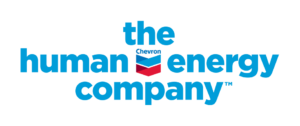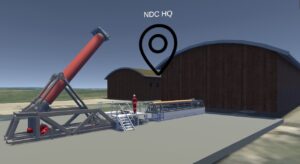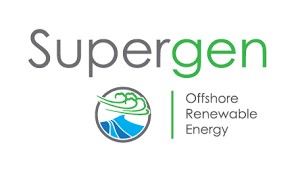 An ambitious research programme to address some of the major questions around the environmental implications of decommissioning energy assets at a number of global locations and provide guidance for optimal decommissioning.
An ambitious research programme to address some of the major questions around the environmental implications of decommissioning energy assets at a number of global locations and provide guidance for optimal decommissioning.
The projects focus on techniques for monitoring fish stocks around installations and pipelines as man-made marine habitats, the bioavailability of potential decommissioning-related substances, and modelling the longevity and eventual fate of offshore infrastructure left in situation.
The partnership funds 1 x Postdoctoral Research Fellow (PDRA) and 3 x PhD studentships for an initial period of 3 years.
The PDRA and PhD students are part of the multidisciplinary team based the NDC, working across engineering, environmental sciences and marine biology. The researchers also work closely with Chevron personnel in the UK and internationally.
Postdoctoral Project:
PhD Projects:
For further information about each of the following, please see PhD Projects.
Challenge 
Oil and gas structures support biodiverse ecosystems, but a main unresolved issue is the degree to which these types of structures enhance ecosystem function when compared with nearby natural systems.
Project Aim
To identify and compare ecological dynamics across communities associated with oil and gas structures with natural systems.
Project Outline
This project will use a multifactorial approach (stereo-ROV footage, stable isotope ratios, fatty acids, stomach contents) to investigate the stability of the complex ecological networks associated with oil and gas structures in tropical systems.
Status
Analysing stereo-ROV data of fish assemblages in the vicinity of oil and gas pipelines in NW Australia, compared with natural reef and soft sediment habitats.
- Identified key behavioural characteristics from stereo-ROV data.
- Identified community diversity, functional diversity and redundancy using multivariate and univariate trait- based methods.
Publications:
Haven or hell? A perspective on the ecology of offshore oil and gas platforms (Apr 2024), PLOS Sustainability and Transformation
The functional diversity of fish assemblages in the vicinity of oil and gas pipelines compared to nearby natural reef and soft sediment habitats (May 2023) Marine Environmental Research
Spawning aggregation of bigeye trevally, Caranx sexfasciatus, highlights the ecological importance of oil and gas platforms in the Gulf of Thailand (Oct 2022) Estuarine, Coastal and Shelf Science
Project Team
Academic Team:
- Dr Alethea Madgett – alethea.madgett@abdn.ac.uk
- Prof Alfred Akisanya – a.r.akisanya@abdn.ac.uk
- Prof Euan Harvey – euan.harvey@curtin.edu.au
Company Partner : Chevron
- Dr. T Elsdon
- Dr. M Marnane
- P Oliver

Challenge
There are challenges which are common to both the nuclear and oil and gas sectors. Following extensive discussions in a cross-sector collaboration group, the Nuclear Decommissioning Authority partnered with the NDC as an anchor partner in January 2022.
Partnership aim
This 3-year partnership will focus on areas of mutual interest to the oil and gas and nuclear decommissioning sectors where we have ongoing research to deliver benefit to both sectors
Projects’ outline
The focus for the partnership will include :
- Cost benchmarking for decommissioning and the economic Impact of nuclear decommissioning
- Use of AI for safety and risk assessment
- Industrial particles in sand beds
- Digital Fluidity
- Underwater laser cutting
- Decarbonising decommissioning
- Remote and autonomous operations in hazardous environments
- Alternatives to cement
Status
- Cost benchmarking for decommissioning and the economic Impact of nuclear decommissioning (phase 1, complete)
- Cost benchmarking for decommissioning and the economic Impact of nuclear decommissioning (phase 2, underway)
- Use of AI for safety and risk assessment (phase 1 and 2 complete)
- Industrial particles in sand beds (underway)
- Digital Fluidity (complete)
- Underwater laser cutting (feasibility study complete)
Project Team
Academic Team:
- Prof R Neilson – r.d.neilson@abdn.ac.uk
- Dr S Arnau (Project Manager) – sergi.arnau@abdn.ac.uk
- Mr M Stone (Group Technology Deployment Learning from the Oil & Gas Industry)
- Dr Naser Makarem (Group Technology Deployment Learning from the Oil & Gas Industry)
- Dr Y Abdul-Salam (Economic impacts)
- Dr Yagi Sripada (AI/risk & digital fluidity)
- Dr Dominic van der A (Industrial particles)

Challenge
The regulatory requirements state that the structures left at sea shall be monitored but no explicit details are available on how to accomplish this.
Project Aim
To develop an industry and regulator agreed protocol for monitoring of derogated oil and gas infrastructure.
Project Outline
Gravity base concrete legs and storage cells, jackets and footings, nav-aid structures, and cutting Piles are considered in the study. The project focuses on answering three key questions– (i) what measurands and locations need to be monitored?, (ii) when the measurements should happen?, and (iii) how the existing technologies can be used to achieve the monitoring goals?
Status – project complete
An extensive review of monitoring planning strategies and decommissioning literature has been conducted. A risk-based framework for inspection planning and implementation methods is proposed and developed for derogated offshore structures.
The project team is in ongoing discussions with regulators and industry bodies to ensure alignment and wider reach.
Project Team
Academic Team:
- Dr Rajeshwara Sriramadasu
- Dr Srinivas Sriramula – s.sriramula@abdn.ac.uk
- Prof A. R. Akisanya , Prof A Ivanovic
- Dr P Omenzetter, Dr M. Amir Siddiq
- Dr D Vega-Maza
Company Partner: Shell UK Limited
- James Blackburn
Funder: Shell
Challenge
The risk of in situ decommissioning to fisheries is a major factor in pipeline decommissioning decisions. Current fisheries risk assessments generally use fishing data with a low spatial and/
or temporal resolution, and do not consider impacts beyond injuries and fatalities. Furthermore, snagging risk factors (gear type, soil condition), and how they translate to different outcomes when snagging occurs are poorly understood.
Project Aim
Develop a fisheries snagging risk model for decommissioning pipelines in the North Sea.
Project Outline
This 3.5-year PhD project will be delivered through four work-packages;
WP1 Quantify snagging events and fisheries interactions with subsea pipelines
WP2: Analysis of North Sea pipeline properties, fishing and soil conditions
WP3: Development of a Finite Element model
WP4: Basin-scale assessment of fisheries impacts and risks under pipeline decommissioning scenarios
Status
This project started January 2023
Project Team
Academic Team:
- Sanaa Al-Azawi
- Prof Ana Ivanovic, a.ivanovic@abdn.ac.uk
- Prof Richard Neilson
Funders :University of Aberdeen and NDC
![]() Challenge
Challenge
To deliver innovation, impact and technical development in the field of floating offshore wind, which is vital for achieving net zero and energy transition goals
Project Aim
Investigate and inform approaches to offshore wind development and maintenance that have the potential to bring significant improvements to current processes as well as cost savings to industry
Project Outline
Delivered through 3 x co-funded PhDs projects focused on:
The National Decommissioning Centre’s £1.6 million immersive simulation suite will be used to trial virtual marine operations related to the installation and maintenance of FOWT systems in a risk-free environment.
The project will investigate how key environmental stakeholders, advisory bodies and research organisations can work together to identify gaps in their knowledge of how offshore wind farms interact with the marine environment, and better identify solutions.
This project will develop a numerical tool to improve the design of combined floating platforms and mooring and dynamic cable systems, allowing users to quickly identify the best solutions based on project circumstance and cost.
Status
Projects 1 and 3 above started in February 2023 for 3.5 years. Project 2 has recruited a student and will start in June 2024.
Project Team
Academic Team:
- Dr Marcin Kapitaniak (marcin.kapitaniak@abdn.ac.uk)
- Prof Richard Neilson
- Prof Ana Ivanovic
- Dr Vahid Vaziri
- Dr Rodrigo Martinez
- Dr Peter Dunning
- Dr Antonios Karadimos
- Dr Luke Eatough & Dr Daniel Milano (ORE Catapult)
- Prof Curran Crawford (Uni of Victoria, Canada)
Funders :ORE Catapult, University of Aberdeen and NDC

![]() Challenge
Challenge
Current methods for well plugging and abandonment (P&A) are time consuming and not cost effective. Therefore, there is a need to qualify new materials and technologies to optimise the process of Well P&A.
Project Aim
The aim of the project was to provide a test rig to mimic high-temperature & high-pressure environments. To give repeatable and consistent testing conditions to allow qualifications of different barrier methods and to give operators and regulators confidence that a proposed novel barrier solution will work.
Project Outline
In recent years new well P&A materials using thermite and bismuth alloys have been developed to high TRLs. Before deployment of these in the field, OEUK guidelines indicate that a functional test must be carried out to show a new technology is fit for purpose. Key stages of the project involve the design, construction and commissioning of a high-pressure high-temperature test rig, where a pressure test mimicking downhole conditions can be conducted.
Status
- FEED report and design specifications completed.
- Tender process completed.
- Design and fabrication started in Q1 2022
- Commissioning Q3 2024.
Project Team

- Dr Sergi Arnau – sergi.arnau@abdn.ac.uk
- Prof Richard Neilson
Funder :
Scottish Government’s Decommissioning Challenge Fund
 Challenges
Challenges
- Reliance of Floating Offshore Wind anchor installations on heavy lift vessels.
- Need for simpler installation methods due to increasing demand.
Project Aims
- Develop novel methods of deploying floating wind farm anchors and mooring systems utilising Aubin’s Deepbuoy technology.
- Identification of the safe operating conditions for the proposed methods (e.g. weather conditions, sea states, shallow/median/deep water) through developed models
Project Outline
This collaborative research project between the NDC & Aubin Group addresses a need for the development of novel, more efficient and cost effective methods for the installation of offshore windfarms. The research programme is underpinned by detailed modelling studies performed on state-of-the-art, real-time, real-physics Marine Simulator. This allows us to assess Aubin’s Deepbuoy technology, in terms of its applicability, benefits in terms of costs and reduced carbon footprint for installation of wind farms infrastructure.
Status – complete
- Model developed in NDC’s Marine Simulator
- Virtual field trials under varying weather conditions and operational parameters for the deployment of variable buoyancy anchors.
Publications
Variable buoyancy anchor deployment analysis for floating wind applications using a Marine Simulator (July 2023) Ocean Engineering
Project Team
Academic Team:
- Dr M Kapitaniak – marcin.kapitaniak@abdn.ac.uk
- Prof R Neilson
- Dr R Martinez
- Dr S Arnau
![]() Company Partner : Aubin Group
Company Partner : Aubin Group
- Dr C Scullion
- P Collins
Funder: EPSRC Supergen ORE Hub & Floating Offshore Wind Centre of Excellence
![]() Challenge
Challenge
This cluster of projects is driven by the Scottish Government’s commitment to achieve Net Zero emissions by 2045. To achieve this, all decommissioning activities will need to reduce emissions.
Project Aim
To assist the sector in reducing greenhouse gas emissions through deployment of new technologies, operation optimisation, basin wide decision making and co-action and reuse and repurposing of assets
Project Outline
- De-carbonising Decommissioning
- Optimisation of decommissioning techniques for emissions reduction
- Modelling of new technologies and decommissioning scenarios
- Decision Making in Late Life and Decommissioning
- Supporting of emissions reduction through co-action and campaign planning
- Supporting the supply chain in decision making for investment and technologies
- Infrastructure Re-Use
- Obtaining data from UKCS and building a digital copy of an exemplar region of the North Sea
- Assessment of suitability for re-purposing of oil and gas legacy infrastructure to accelerate the progress of CCS and hydrogen production and storage
- Modelling of opportunities for energy integration concepts
Status
The final scope of the areas identified is taking place
Publictions
Bottom-up formulations for the multi-criteria decision analysis of oil and gas pipeline decommissioning in the North Sea: Brent field case study (Aug 2024) Journal of Environmental Management Vol 365
Repurposing an Offshore Oil and Gas Platform for Green Hydrogen Production: A North Sea Case Study (June 2024),
SPE Europe Energy Conference and Exhibition Paper Number: SPE-220114-MS
Project Team
Academic Team (interim):
- Prof R Neilson – r.d.neilson@abdn.ac.uk
- Malcolm Stone – malcolm.stone@abdn.ac.uk
- Dr Marcin Kapitaniak – marcin.kapitaniak@abdn.ac.uk
- Dr Sam Cauvin
- Dr K Gormley
- Dr Lawrence B. Wilcox
- Dr Shahin Jalili
- Dr A Maheri
- Dr A Martinez-Felipe
- Dr G Leonitidis
- Dr Yagi Sripada
- Professor John Paterson
Funder: Scottish Government’s Energy Transition Fund

![]()
Challenge
Access to data for existing assets, seabed and subsurface surveys etc. is limited – with data owners reluctant to share what is generally seen as confidential / commercially sensitive information.
Project Aim
To design a secure data repository which gives companies a means to provide access to more of their data in a controlled way.
Project Outline
The Safe Haven proposal offers the potential to build on the existing data platform technology used to host, anonymise, merge and interpret medical information within the University of Aberdeen to develop an oil and gas data platform that through providing a demonstrably robust and secure environment encourage operators and supply chain to share information. The benefit of the project will be in providing a platform which the supply chain (and operators) can access which will provide details of the portfolio of assets to be decommissioned and an estimate the of the CoP/decommissioning timescales. This will allow the supply chain to plan for both P&A campaigns and removal and disposal.
Status – project complete
- Interviews conducted with industry stakeholders to survey opinions, requirements, and the current landscape
- Report of insights generated from these interviews (so far) created
- In the future, the results of these interviews can be applied to create a technical specification for this repository, and any adaptations required to the current Safe Haven environment.
Project Team
Academic Team:
- Dr Samuel Cauvin – s.cauvin@abdn.ac.uk
- Prof Wamberto Vasconcelos
- Prof Richard Neilson
- Katie Wilde
Funder:
Scottish Government’s Decommissioning Challenge
![]() Challenge
Challenge
The expected design life for an Offshore Wind Farm (OWF) is estimated to be between 20 and 25 years, and with the desire for additional renewable energy resources, the number of OWFs approaching or entering decommissioning will dramatically increase in the coming years.
Project Aim
The need for an overall sustainable approach to the OWFs’ end of lifecycle is vital. The overall objectives of the DecomTools project are as follows:
- Reducing the decommissioning costs by 20% and environmental footprint by 25%
- Enhancing the know-how and expertise of North Sea Region involved stakeholders
Project Outline
The DecomTools project engages different European partners and stakeholders in the North Sea region to provide a comprehensive approach by considering different aspects of OWF decommissioning. Research will be validated by demonstration pilots and working tools in the areas of logistics, safety, ship design and up-/re-cycling. The currently available technologies will be combined to tackle some of the major aspects of the decommissioning challenge, including the optimisation of existing (port) off/onshore infrastructure. Transnational working and multidisciplinary cross sector competences will improve framework conditions for innovation and technology transfer in this specific niche area and help the sector to achieve a higher eco-balance.
Status
- The team at the University of Aberdeen has developed a Decision Support System (DecomDSS) for defining different OWF decommissioning scenarios and conducting multi-criteria assessment of each scenario.
- DecomDSS employs a robust data platform, specifically developed for decommissioning of OWFs.
- DecomDSS conducts cost and emission analysis for different stages of offshore operations.
- DecomDSS conducts a stochastic weather risk analysis and allows for optimum project planning
Project Team:
- Dr Shahin Jalili – s.jalili@abdn.ac.uk
- Dr Alireza Maheri – alireza.maheri@abdn.ac.uk
- Prof Ana Ivanovic
- Mr Kenneth Bisgaard Christensen
Partners: University of Applied Sciences Emden/Leer, Hamburg Institute of International Economics, De Lauwershorst Groep, POM West-Vlaanderen, Maritime & Logistics Innovation Denmark, Samsø Municipality, Port of Oostende, New Energy Coalition, Energy Cluster Denmark, Marine Scotland, Port of Grenaa, Virol Metaal B.V
Funder: EU Interreg VB North Sea Region Programme
![]() Challenge
Challenge
- NORM and mercury are associated with oil and gas production
- Require incorporation in risk-based impact assessment for decommissioning
Project Aim
- Provide an insight into marine impact assessment based on literature data and in-silico simulations
Project Outline
- Scientific expert opinion for best approach EIAs in Australian waters
- Assessing environmental contamination, bioaccumulation potential, and the possible impact on the future use of marine resources
Status – project complete
- Determined pipeline threshold concentrations to limit environmental contamination
- Conducted food web modelling of potential contaminant accumulation and human exposure
Publications
An approach to assess potential environmental mercury release, food web bioaccumulation, and human dietary methylmercury uptake from decommissioning offshore oil and gas infrastructure (April 2023) Journal of Hazardous Materials
Threshold values for the protection of marine ecosystems from NORM in subsea oil and gas infrastructure (December 2022) Journal of Environmental Radioactivity
Current Understanding of The Ecological Risk of Mercury from Subsea Oil and Gas Infrastructure to Marine Ecosystem (July 2022) Journal of Hazardous Materials
Project Team
- Prof A Hastings – astley.hastings@abdn.ac.uk
- Dr R von Hellfeld – rebecca.vonhellfeld@abdn.ac.uk
- Dr S Higgins – Stuart.Higgins@curtin.edu.au
- Dr D Koppel, Dr F Kho, Dr D Crouch
Funding Partner: NDRI and NERA
![]()
 Challenge
Challenge
While abrasive water jet, diamond wire and shears have all been used successfully for cutting structures underwater, they each have drawbacks and limitations.
Project Aim
To to prove the concept of underwater laser cutting as a viable, economic and energy efficient alternative to existing techniques.
Project Outline
Proof-of-concept work by the University of Aberdeen demonstrated the feasibility of cutting steel in very shallow water using a solid-state near-infrared laser and a modified commercial cutting head. This project extended this work by developing a new purpose-built underwater laser cutting head designed to undertake internal and external cuts on tubulars. Key stages involved the design of a novel nozzle to provide the gas jet needed to remove melted by-product and development of a control system for the test rig. All components were tested to 500m water depth prior to the cutting trials.
Status – project complete
- Trials using the NDC’s 15kW Laser have demonstrated successful cutting of:
- 100mm thick steel at 5m depth during tank trials
- 60mm thick steel at 70m depth during open water trials at Kishorn loch
- Phase II funding has been secured for the development of a commercial cutting system
Project Team
Academic Team:
- Prof. Richard Neilson – r.d.neilson@abdn.ac.uk
- Dr Keith Jackson
- Edward Stephen
- John Polanski
Company Partner: Claxton
- David MacWilliam (Phase I)
- Nick Graves (Phase II)
Funder: Net Zero Technology Centre

